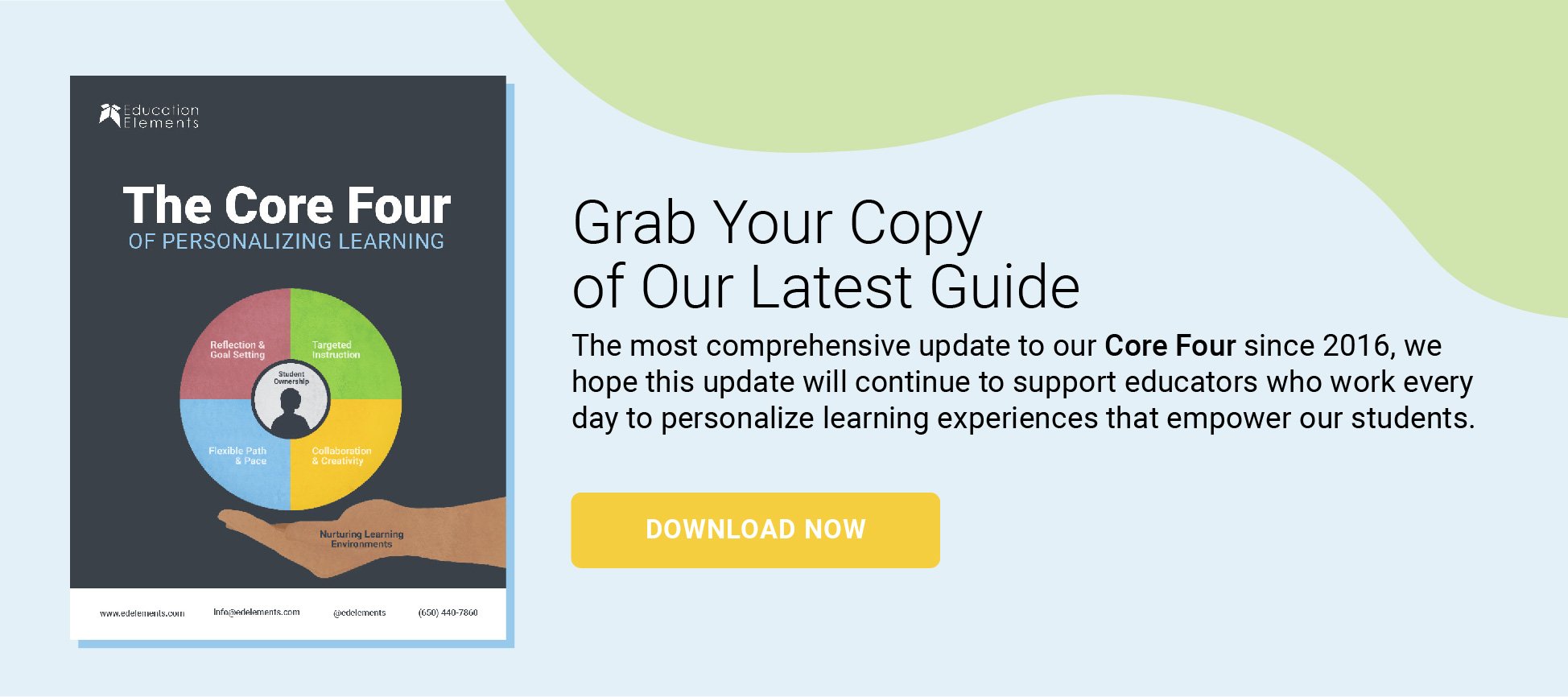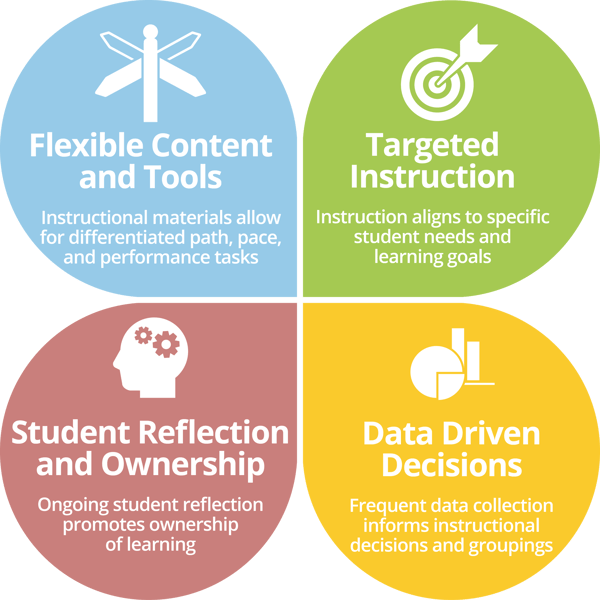In some ways, creating a successful personalized learning classroom is similar to winning a basketball game.
To give us direction, my high school basketball coach consistently focused on three key areas, which he called the Big Three:
(1) Out-rebound the other team
(2) Limit turnovers to fewer than 12
(3) Make at least 80% of our free throws

He believed that focusing on the Big Three would create the proper strategy to win basketball games. During halftime and time outs, my coach would often refocus our team on one or more of these elements by saying things like, “They are killing us on rebounds. Everyone needs to rebound!” or, “We have 10 turnovers already. We need to start taking care of the ball!”
His words told us what we needed to know when we got back on the court, as well as gave us a preview about what we would likely do a lot of in the next day’s practice.
Not surprisingly, when our team met these three elements, we won.
At Education Elements, we have established our own set of key elements, called the Core Four, that lead to a successful personalized learning classroom. Similar to the basketball court, these core elements can provide guidance for educators in creating a winning strategy for their district, schools, and classrooms.
Dive Deeper Into the Core Four With This White paper
The Core Four white paper includes a framework, actionable ideas and insights from districts who have
successfully implemented personalized learning.

The Core Four of Personalized Learning

Of course, the Core Four cannot simply be the only items on a check-off list---my team would have certainly still lost basketball games if we did not focus on playing defense, perfecting plays, and working together as a team, just as educators need to develop relationships with students, master their content, and manage behavior.
However, similar to my coach’s Big Three, the Core Four are designed to provide educators with areas of focus to ensure success as they make the shift to personalized learning.
Flexible Content and Tools
While personalized learning is never solely about the technology or digital content, the integration of flexible content and tools is essential in creating a successful personalized learning classroom. By leveraging digital content and tools, teachers can provide an individualized path and pace for students.
Teachers also understand how to use foundational, adaptive, and highly customizable content and tools in order to differentiate the path, pace, and/ or performance tasks of learning. Where digital content and tools are used they do not replace the teacher; rather, they work alongside the teacher to better support students’ needs by providing remediation, practice, extension, and/or a variety of ways to demonstrate knowledge authentically
Targeted Instruction
Targeted Instruction involves breaking down the monolithic, whole-group structure found in traditional classrooms in order to better meet the needs of students. Using data, teachers are able to create and change student groups frequently and purposefully based on student interest, need, or skill-level.
The small groups themselves can lend to differentiation by using various strategies, such as grouping students with homogenous skills so teachers can focus their lessons or heterogenous skills to encourage collaboration. Many benefits can stem from the use of Small Group Instruction.
For example, Small Group Instruction provides students with more opportunities to share their thoughts and questions, and teachers often find that Small Group Instruction enables them to build more personal relationships with students.
Data Driven Decisions
In successful personalized learning classrooms, teachers frequently collect and review data to identify trends and areas that need improvement. Through such analysis, teachers can modify their instruction to meet the data-driven needs of students.
For example, a teacher may discover that a math concept needs to be retaught to a small group of students within her class, or she may find that certain students are able to bypass a specific objective.
Data-Driven Decisions also entail opportunities for teachers to review data with their students in order to improve learning and help students to set goals and monitor progress against them.
Student Reflection and Ownership
Built on metacognition research, we believe students need ample opportunities to reflect on their own learning. Although far from simple to accomplish, Student Reflection and Ownership begin with a teacher helping students to track their own data and set specific learning goals.
Teachers should provide mentorship and support as students develop the skill of reflecting on their own learning. With practice, Student Reflection and Ownership lead students to become self-directed learners who take ownership of their academic futures.
By focusing on these simple elements, teachers, principals, parents, and students will create an environment in which personalized learning can succeed. After all, as the legendary basketball player, Kareem Abdul-Jabbar, once said, “They may just be little things, but usually they make the difference between winning and losing.”
If you'd like to read further on the Core Four, download Education Element's free whitepaper "The Core Four of Personalized Learning."
Note: This is an updated blog post, originally published in 2016.
We have made edits to our Core Four after 2 years of experimenting it across schools and districts. A New blog post got published on the same topic: Personalized Learning Requires Flexibility: An Update to Education Elements’ Core 4
More Personalized Learning reading
Blog: Six Examples of What Personalized Learning Looks Like
Blog: Personalizing Learning: Getting it Right
Blog: Personalizing Learning: Reflection and Goal-Setting